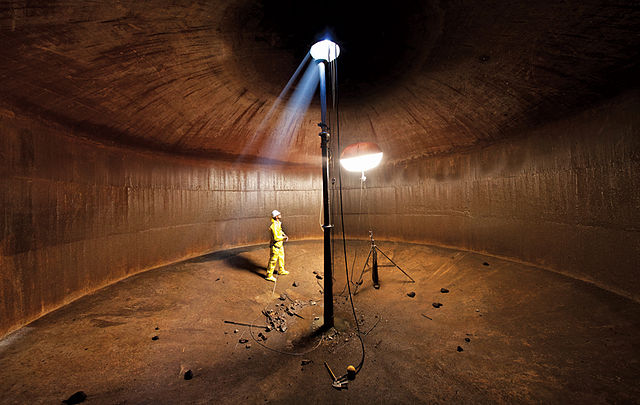Rainwater harvesting (RWH) is the collection and storage of rain, rather than allowing it to run off. Rainwater is collected from a roof like surface and redirected to a tank, cistern, deep pit, aquifer, or a reservoir with percolation, so that it seeps down and restores the ground water. Dew and fog can also be collected with nets or other tools. Rainwater harvesting differs from stormwater harvesting as the runoff is typically collected from roofs and other area surfaces for storage and subsequent reuse. Its uses include watering gardens, livestock, irrigation, domestic use with proper treatment, and domestic heating. The harvested water can also be committed to longer-term storage or groundwater recharge.
Basic configuration of domestic rainwater harvesting system in Uganda.
Rainwater capture and storage system, Mexico City campus, Monterrey Institute of Technology and Higher Education
Cistern, Mission District, San Francisco, California
Rainwater capture, Gibraltar East Side, 1992
Stormwater harvesting or stormwater reuse is the collection, accumulation, treatment or purification, and storage of stormwater for its eventual reuse. While rainwater harvesting collects precipitation primarily from rooftops, stormwater harvesting deals with collection of runoff from creeks, gullies, ephemeral streams and underground conveyance. It can also include catchment areas from developed surfaces, such as roads or parking lots, or other urban environments such as parks, gardens and playing fields.
Recently completed infiltration basin for stormwater collection
Dissolved Air Floatation Treatment at the Santa Monica Urban Runoff Recycling Facility






